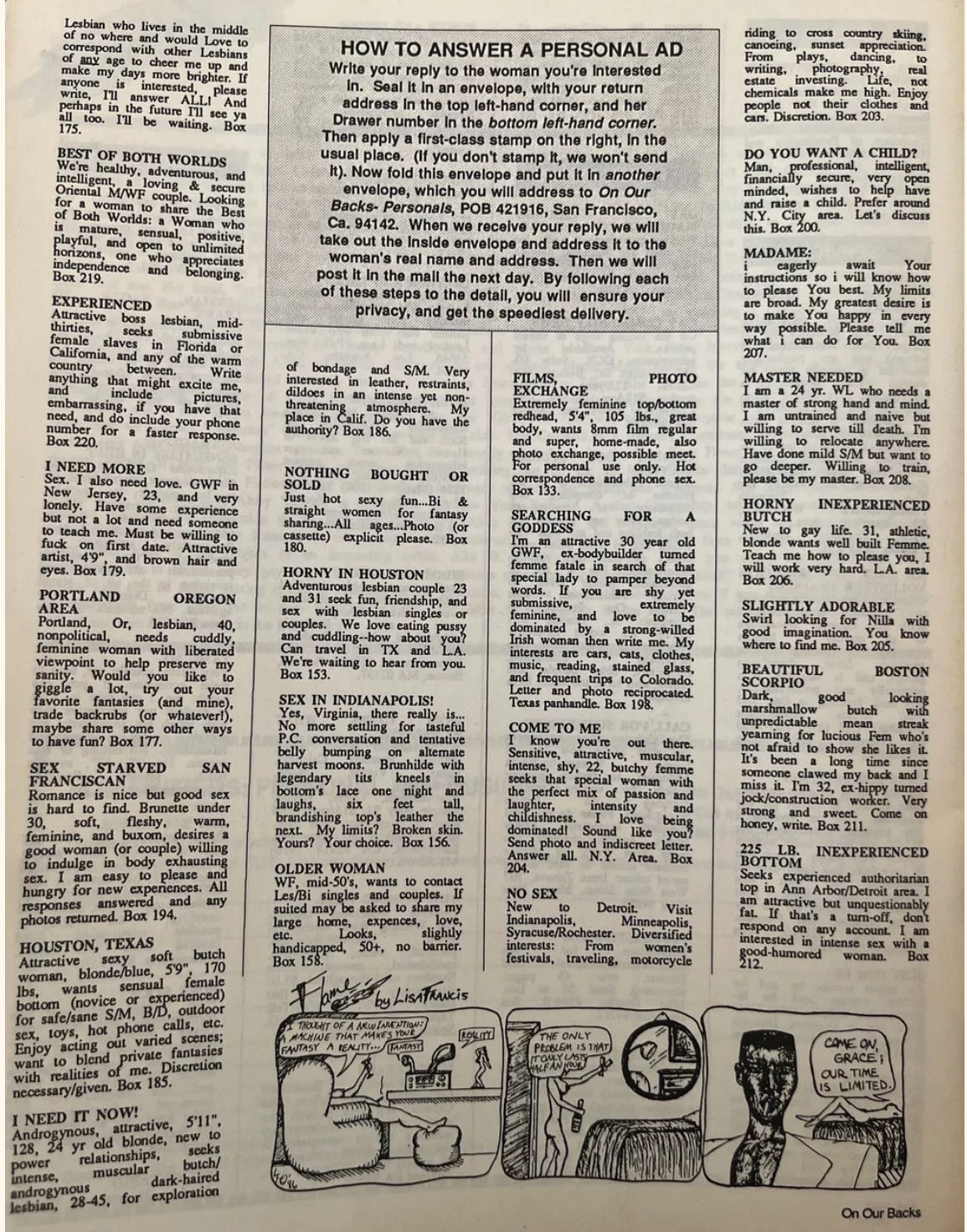Desperately Seeking Women: My On Our Backs Personals Empire
Why are young women fascinated with the personal ads of their mother’s generation?
Once upon a time there were magazines.
Once upon a time there was a wildly-radicalized lesbian intelligentsia that was coming out of the closet.
And . . . in these halcyon days, there were tiny letters looking for love in the back pages of my old underground magazine, On Our Backs. Everyone read them.1
No one had seen personals like On Our Backs’, when we debuted in 1984. Dykes had never been this frank about their sexual interest before. Nor had straight women.



